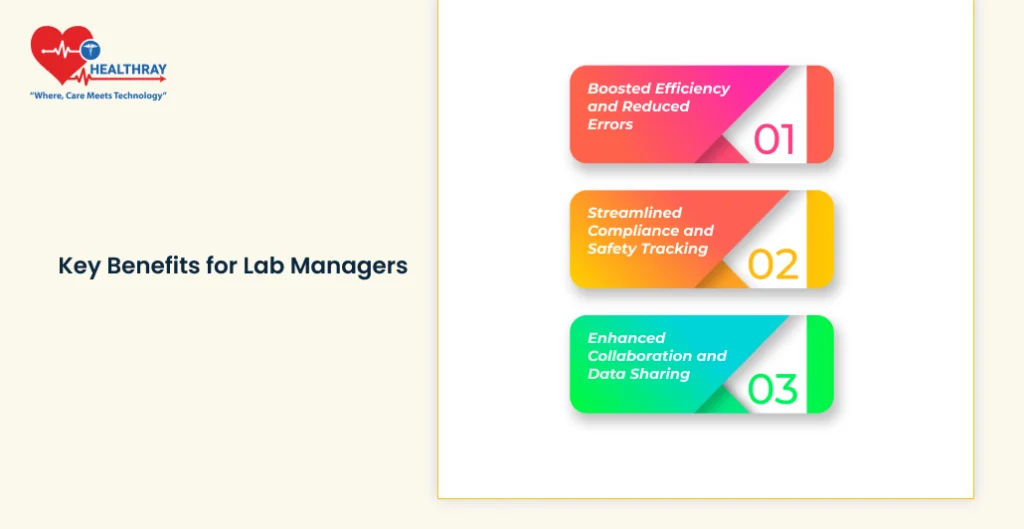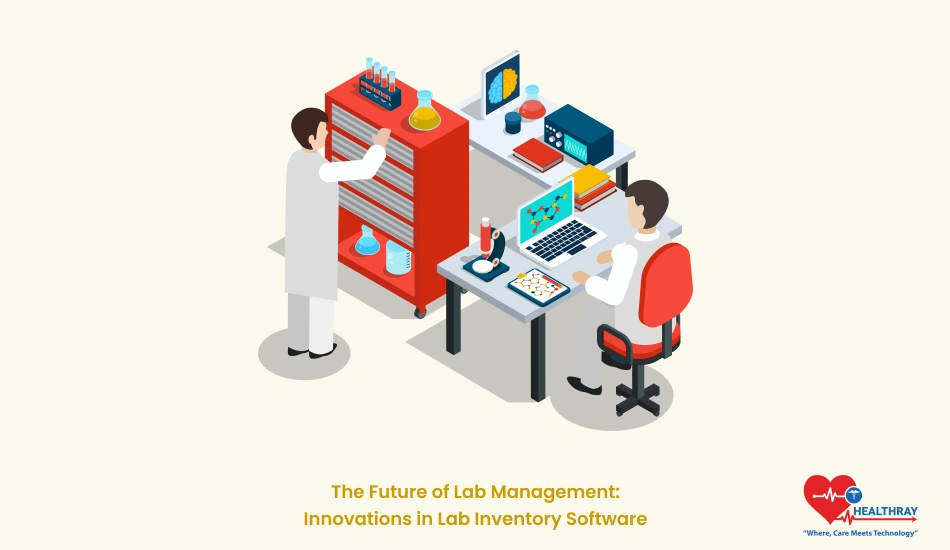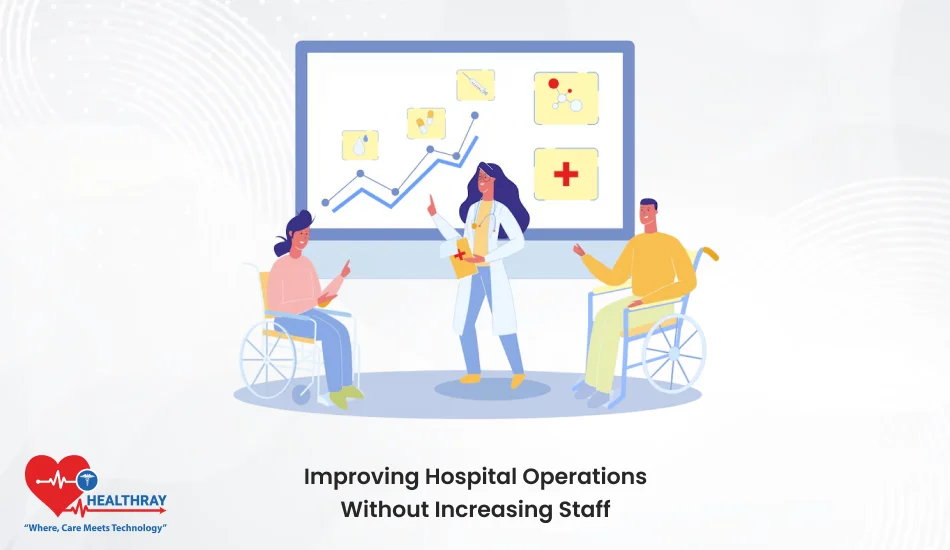Introduction
While managing a lab today is much more than just tracing test tubes and microscopes around, as the lab becomes complicated and data-oriented, so does the lab manager, researcher, and lab owner. Advanced software solutions are being used for every little thing-from inventory to compliance. Lab inventory is growing extremely fast, and it definitely makes labs function differently and brings new efficiencies to scientific workflows. What will the future be like for lab management?
In this post, we will concentrate on the newest innovations related to lab inventory software: AI-based forecasting and cloud connectivity, customization options, and collaboration tools. By the end you will see how these innovations can help overcome some of the most significant challenges of the Laboratory Information Management System, allowing you to focus more attention on what truly matters-showcased within research and discovery.
The Evolution of Lab Inventory Management
For years, inventory management was merely scribbling it in books, relying on a spreadsheet for keeping track, and sometimes memory, for supplies and equipment. However, as lab technology advanced and made it more difficult with the old simplistic approaches, it became more difficult to track them accurately as labs process complex data, varied materials, and never-ending supply orders.
The modern lab inventory software was of great importance in addressing the issues, with automated tracking, real-time updates of the inventory, and digital records that can be easily accessed. These tools made the labs have a better oversight of resources, reduced wastage, and improved budgeting. However, with the changing demands of research and evolving environments, the necessity for these more robust solutions continues to grow.
New Technologies that will Frame the Future Lab Inventory Management

The future of lab inventory management is integration of new technologies making lab operations intuitive, automated, and accessible. Such new technologies bring efficiency and precision, which can be utilized to ease the burden from the lab managers and researchers so they can focus more on scientific goals and less on administrative tasks.
Artificial Intelligence and Predictive Analytics
Probably, the most radical forces influencing the management of lab inventory at the moment are artificial intelligence. Through AI now, lab inventory can predict consumption against past usage. For instance, AI algorithms scan through past histories of the consumption of inventory for supplies and can therefore predict that before these supplies get low, disruptions in research might be caused by stockouts.
Predictive analytics also facilitate compliance since, being a type of content, they abide by and ensure that such content abides by the regulations. In the case of hazardous content, AI for labs shall inform the users about the risks in terms of compliance and auto-document the process steps to ensure compliance with safety standards.
Cloud and IoT Integration
This changes the game in lab management as it, through the cloud, makes all the data available to labs in real-time anywhere. The inventory software, based on a cloud platform, will help lab managers and researchers to see what stock is available, what the status of equipment is, and to be able to monitor orders remotely. In that sense, constant connectivity makes it possible for labs to be compliant and ready, even in the event of multiple locations.
The Internet of Things has also made the management of lab inventories easier. For instance, the status and usage of connected devices such as freezers, incubators, and monitoring systems can be directly reported to the inventory system. This eliminates human errors, quickens reaction times toward equipment failure, and offers more accurate usage information.
Customization with Low-Code and No-Code Platforms
Labs are far from being one-size-fits-all propositions, and many lab management software solutions today offer options to customize on low or no-code platforms so that lab managers could tailor workflows, tracking methods, and even reporting features without needing to write one line of code.
It becomes easier for labs to configure the software in ways that feel natural, rather than unnatural, to their operations. For instance, a genetics lab might configure the software to track specific workflows in sample tracking. A clinical lab can focus on compliance features. This way, the custom and other needs they serve help make lab management software more practical and relevant for all lab environments.
Key Benefits for Lab Managers

As lab inventory software develops, the benefits go beyond simple inventory tracking. The new systems are designed and built to increase productivity, compliance, and team collaboration in ensuring that daily operations are as smooth as possible for lab managers and their teams.
Increased Efficiency and Reduced Errors
One of the greatest advantages of modern lab inventory systems is the automation of repetitive tasks. From automatic restocking alerts, real-time tracking of inventories, and so many more, the lab managers now do not have to spend several hours checking how much of this or that inventory they have. Automation then reduces any human errors and ensures a constant supply.
This also makes data entry more accurate because items are logged, tracked, and updated in real time. For example, when a reagent has been consumed or when equipment has been serviced, this will automatically be recorded in the system. This minimizes the chance of missing entries and gives lab managers a real-time view of their assets.
Simplified Compliance and Safety Tracking
The first priority of any lab especially that makes use of hazardous material is to see to it that it complies. Lab inventory software makes compliance easier by automatically recording the safety procedures followed as well as monitoring chemical storage. This way, reports are supplied to regulatory bodies, ensuring all materials are stored and used according to those regulations in force. It does this by incorporating safety reminders and alerts.
By discouraging non-compliance, these tools can prevent expensive fines and a hazardous working environment. In addition to this, such compliance tools also facilitate audits by providing all the necessary information in a well-organised and easily accessible manner within the software package.
Enhanced Collaboration and Data Sharing
Modern labs are collaborative spaces. That is, they often involve many researchers and, in some cases, locations around the world. Lab inventory software provides teams with a seamless environment in which data can be shared and inventory tracked; thus, barriers to collaboration disappear. Researchers can access inventory data, order supplies, and even look at equipment availability without interrupting each other’s work.
This central access helps coordinate through the team members involved, be they located in the same building or anywhere across the globe. Better collaboration accelerates research without having duplicates and ensuring all work with the newest data.
Some of the Best Tools and Features of Lab Inventory Software
To know how these advancements work out in real life, let’s look at some features from leading lab inventory management tools. These tools target the issues affecting lab operators, ranging from resource management to effective collaboration.
AI-Powered Inventory Forecasting (Labguru)
The tool uses AI-based forecasting, which would predict what a lab will need in terms of inventories based on usage trends. This way, labs are prepared ahead of time not to run out of certain supplies in the middle of an experiment. The AI system can even monitor chemical and reagent expiration dates, send users reminders when something needs to be reordered or replaced, and thus prevent the misuse of materials.
Real-Time Inventory and Usage Tracking (Quartzy)
Quartzy has a central dashboard through which the lab managers are able to track their stocks, request new supplies, even monitor orders in real-time. This way, the lab personnel can see real-time inventory levels of each item. In addition, Quartzy integrates tools like Slack or QuickBooks to make it easier to automatically synchronize data between the two platforms without manual entry. This integration enhances workflow efficiency and enables labs to maintain a current account of expenses made on inventory.
Tailored Virtual Storage Spaces (Genemod)
Genemod has the “virtual freezer” or virtualization of the lab storage space. This makes it possible for lab managers to have an exact array of storage from shelves to cryo boxes which makes it easier to locate samples or reagents, among others.
Genemod supports the setting up of reorder points so that if supplies are run low, notifications are sent; this feature mitigates the days it would be required to track down materials to lab types possessing complex storage requirement and ensures appropriate management of contents.
Compliance and Safety Automation (BIOVIA CISPro)
BIOVIA CISPro is a well-developed and advanced inventory control application that covers labs with both control and hazard substances. Among these features, some are multi-site tracking, managing lists within regulatory standards, and automatic reporting, which ensures compliance in Tier II. All this makes it fully compliant with any lab working on sensitive materials that ensure full adherence to safety as well as any other protocol laid down. It can also track the movement of material as well as utilization by the labs involved. Therefore, it is always observed at all time to be within full regulation compliance.
Seamless Cloud Connectivity and Remote Access (Thermo Fisher Scientific)
Another solution by Thermo Fisher was the Connect app, that provided lab managers with remote access to lab equipment and inventory data information. So, the cloud connectivity was that besides receiving automatic alerts on mobile devices, the lab conditions could be previewed with the status check of equipment.
For example, if the temperature of a freezer goes below or above a given safe range, it may notify the manager automatically in real time about the potential sample losses. This has been the best approach for effectively monitoring and controlling labs irrespective of their location.
Future Trends in Lab Inventory Management

The future will be bright for LIMS Systems with rapid technological advancements. Lab inventory software will become more predictive, automated, and globally connected, and the labs will also become agile in this fast scientific change landscape. Some of the key trends that should shape the future of lab inventory management among lab managers, researchers, and owners are as follows:
AI-Powered Predictive Maintenance and Scheduling
Predictive maintenance will be the rule of law as more and more artificial intelligence deploys into lab inventory systems. Future machines will first recognize trends in usage of their parent lab equipment, identify wear and tear that may require maintenance, and predict when maintenance may be required. Issues will be dealt with before they actually go into downtime, preventing a disturbance in the smoothness of experiments.
More extensive application of AR in Inventory Management
Utilize augmented reality for the location of supplies or quick information about equipment by pointing the device. Augmented reality will probably change lab inventory management. It will possibly display information right on physical space. For example, an AR glass may locate a reagent or point a lab manager toward equipment that requires maintenance.
This level of information access will make training on new staff easier and accelerate the procedure and accuracy required with inventory management. As AR technology becomes more readily accessible, it is poised to play an increasingly larger role in laboratory settings, particularly large laboratories with complicated inventories.
Increased Reach and Accessibility of Remote and Connected Laboratories
Lab management has already been enhanced by cloud and IoT technologies. The future software, however, takes this one step ahead. There are more devices available in a lab to interconnect with one another based on centralized systems. In such a set-up, experiment management can easily be done anywhere, track conditions, and also adjust the setting.
Advanced Data Security and Compliance measures
As laboratories start processing ever larger amounts of data across networked systems, security will be paramount. Advanced inventory software will feature encryption and multi-factor authentication, full audit trails, and more. Laboratories working with regulated materials should begin expecting compliance features to be even more ubiquitous and integrally linked into the system-to send signals as soon as there are expected regulatory changes to update the system automatically.
The laboratory inventory management software may be supplemented by features that make labs comply with the newer standards of privacy. Here, the personal data to be captured for research purposes will have to be processed safe and responsibly. The software will make all the demands that the lab might have pertaining to the stringently new data privacy legislations of all the countries.
Even More Customizable: Modular Software
The resultant demand for some lab software shall lead to increased transition towards modular systems, such that labs choose only the needed features without additional unwanted features for which there will be no explicit purpose. This means that lab inventory systems are going to become much more modular, in a sense that labs can pick add or delete their feature depending on the specific workflows or research.
Conclusion
The laboratory inventory management rapidly moves to produce innovation in the area of efficiency and connectivity. It empowers labs with the ability to meet the expectations of the present research environment. Everything from the AI-driven level of forecasting for IoT-enabled and cloud-based accessibility raises the playing field in a lab’s capacities to track inventories, supervise equipment, or maintain compliance, which can eventually minimize many problems, reduce some wastage and simplify their efforts for the benefit of the laboratory manager, researchers, and its owner.
There is just so much promise in choosing the hospital management system solution best-suited for your lab: flexibility, security, and integration options that your team needs to really thrive in today’s increasingly complex scientific world. The future looks bright for labs if labs can be ready and confident in deploying these tools.





